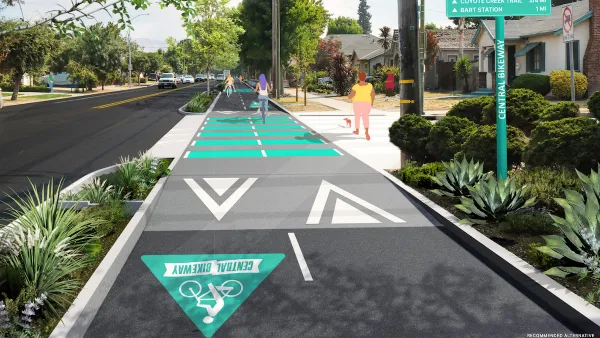More children are using active transportation modes to get to school in the wake of a policy that charges drivers to enter a low-emissions zone in central London.

Kids in London are walking and biking to school more after the city implemented the world’s largest ‘ultra-low emissions zone’ in the city center.
As Syris Valentine explains in Grist, the data comes from a study conducted by University of Cambridge and Queen Mary University researchers that sought to understand how changes in air quality would impact youth health.
In the first of many papers expected from the study, the researchers found that, a year after the ultra-low emissions zone took effect, 2 out of every 5 London students in the study had switched from ‘passive’ to ‘active’ ways of getting to school. So instead of being chauffeured to school by their parents, the students started walking, biking, scootering, or taking public transit.
According to epidemiologist Alison Macpherson, walking or biking to school “can be calming and conducive to concentration” in addition to providing an opportunity for exercise. Future studies will look to understand the reasons why parents make the switch. “While developing pedestrian-friendly infrastructure and building out protected bike lanes can encourage a shift in how people travel, Xiao found as she assembled a review of research investigating how to promote shifts to healthier transit, people preferred the stick to the carrot. In other words, discouraging car travel was often more effective than just building infrastructure conducive to active travel.”
FULL STORY: London Saw a Surprising Benefit to Fining High-Polluting Cars: More Active Kids

Planetizen Federal Action Tracker
A weekly monitor of how Trump’s orders and actions are impacting planners and planning in America.

In Praise of Analog Cities: Futureproofing in a Time of Crisis
I didn’t need a pandemic or a war to teach me that smart cities weren’t the future — but it sure drove the message home.

Silicon Valley ‘Bike Superhighway’ Awarded $14M State Grant
A Caltrans grant brings the 10-mile Central Bikeway project connecting Santa Clara and East San Jose closer to fruition.

A Vision for the Future: LA County Releases Draft Sustainability Plan
Los Angeles County has released the draft 2025 OurCounty Sustainability Plan — shaped by community input — and is inviting public feedback through August 22 to help guide the County’s path toward a more sustainable, equitable, and resilient future.

Honoring Elders: California Tribe Breaks Ground on Affordable Housing
The Fernandeño Tataviam Band of Mission Indians is launching its first senior housing project in Los Angeles County, creating 26 affordable units to serve Native elders and address longstanding housing inequities.

Which San Diego County Cities Are Building New Housing?
Chula Vista permitted the most new housing units per capita, while El Cajon is adding the least.
Urban Design for Planners 1: Software Tools
This six-course series explores essential urban design concepts using open source software and equips planners with the tools they need to participate fully in the urban design process.
Planning for Universal Design
Learn the tools for implementing Universal Design in planning regulations.
Heyer Gruel & Associates PA
Yukon Government
New Jersey Institute of Technology
Mpact (founded as Rail~Volution)
City of Camden Redevelopment Agency
City of Norman, Oklahoma
City of Portland
City of Laramie





























